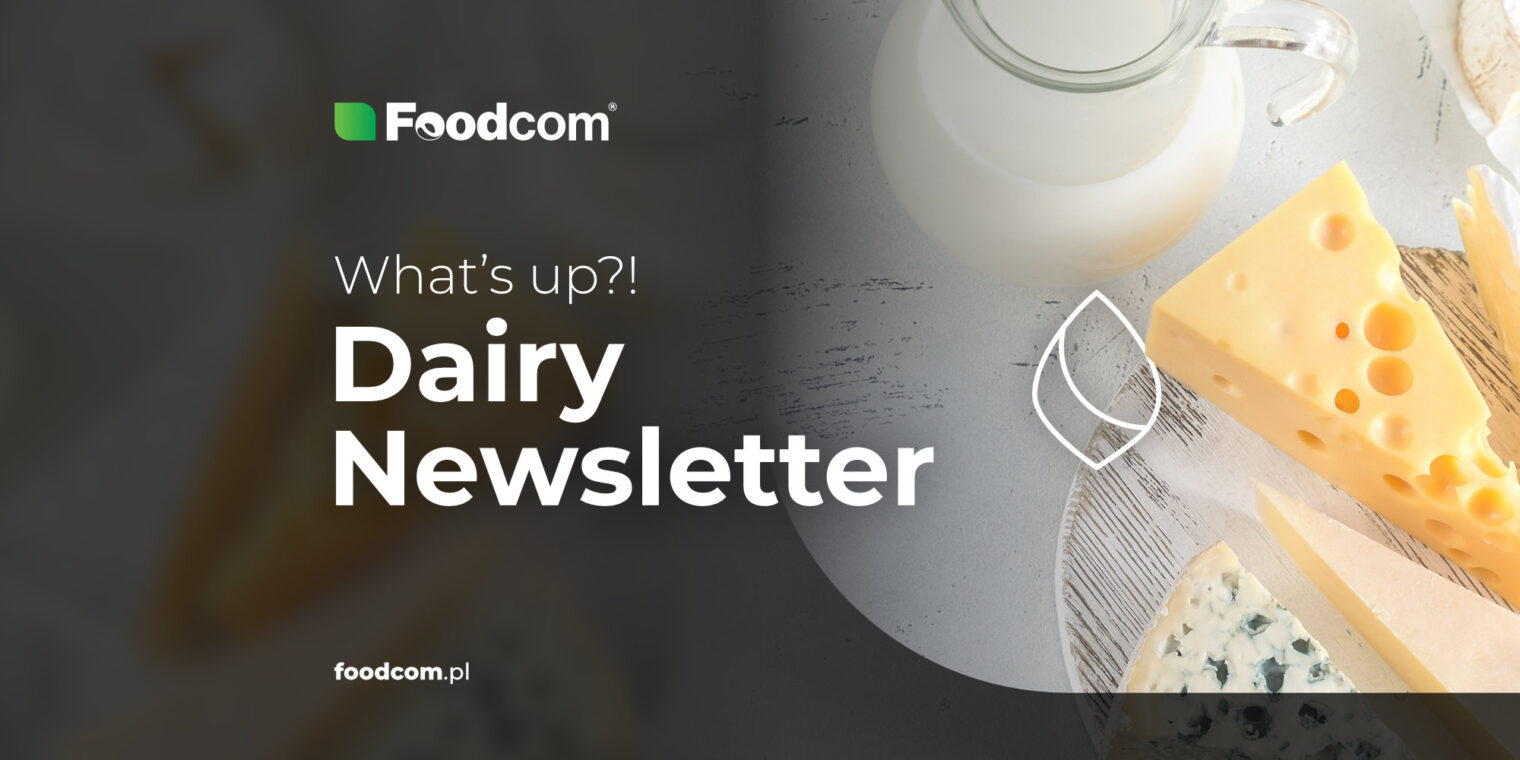Hello, Partners!
Welcome to the revamped Dairy newsletter! As we dive into this new format, we can’t ignore the changing landscape of the industry. With dwindling commodities and rising spot market prices, the dairy industry faces exciting challenges. Keep up to date so you can stay ahead of the curve!
Hottest products of the week
SMP
It seems that SMP has bottomed out and is starting to raise the price slightly. But for now it is not a very clear signal. Maybe the Polish government intervention stocks will help make this trend louder and clearer. More buyers this week compared to previous ones, but not huge volumes traded.
WPC
The price level for WPC is increasing daily as fewer sellers and more buyers are active. It is hard to predict when this will end, but even old timers cannot call it a clear message from the market.
Butter
In an unusual development, Poland now sells less cream to Western countries and imports Butter from the West instead. The country normally exports cream and butter to Germany and the Netherlands, but this shift in trade dynamics has sparked greater consumer interest in Butter, although Sweet Butter is now more expensive than Lactic Butter.
Cheeses
In response to lower milk supply and higher spot market prices, prices for cheeses such as Gouda, Edam, and Maasdam have also increased. This market shift reflects the higher cost of milk production and has led to higher prices for these popular cheeses. Will this also affect the whey market?
Cream
Again and again we see higher prices for Cream. In recent weeks, this trend has been most noticeable in Poland, but the same situation has also set in in France and Germany. Even in Ireland, less milk was received, but the difference between Polish Butter and Irish Butter is still extreme.
News
Europe
UK
From Oct. 1, 2023, UK dairy farmers who supply Sainsbury’s will receive higher payments, with the retailer investing £6 million annually. This additional support, on top of existing investment, aims to reduce the financial burden on farmers and encourage them to be more sustainable in the face of rising costs and challenges in the industry. Sainsbury’s is also committing to sustainability premiums and hopes to ensure a stable supply of British milk for its customers.
EU
Milk production in Europe and the US is showing signs of decline due to lower prices, but demand for dairy products is uncertain, warns John Lancaster, a dairy market analyst at StoneX. Although prices are not expected to fall to 2016 levels, production costs have increased significantly. Lancaster anticipates negative production growth in Europe and the US as a result of low milk prices and reduced herd sizes. Despite these challenges, future price levels are not expected to reach 2016 levels, but production costs remain significantly higher.
The Americas
USA
The United States is implementing the Milk Loss Program (MLP) to help dairy producers who have been affected by frequent and widespread weather-related disasters in recent years. These disasters have disrupted the dairy supply chain, driven up input costs, caused labor shortages and led to market uncertainty. The program, which is funded at $10 billion through the Extending Government Funding and Delivering Emergency Assistance Act of 2022, compensates dairy farms for milk losses resulting from qualified disaster events in calendar years 2020, 2021, and 2022. It covers various disasters such as droughts, wildfires, hurricanes and more. The National Milk Producers Federation has welcomed this initiative to assist affected dairy producers.
Uruguay
Uruguay, a major dairy producer in South America, is facing challenges due to declining demand from neighboring Brazil. Uruguay’s surplus dairy products, which normally found a market in Brazil, are now struggling to find alternative buyers as Brazilian milk production recovers and demand declines. This has led Uruguayan dairy processors to lower milk prices in response to low international prices and declining regional import demand. Surplus Uruguayan dairy products are expected to pressure international markets in search of other buyers.
Asia & Oceania
New Zealand
A recent report highlights the pivotal role of New Zealand’s dairy industry, contributing significantly to the economy through exports and job creation. The dairy sector, encompassing livestock farming and dairy processing, accounts for 3.2% of the country’s GDP at NZ$11.3 billion (US$6.65 billion) as of March 2023. Dairy exports have surged, reaching NZ$26 billion (US$15.31 billion) in the year ending April 2023, comprising about one in four export dollars. The Maori agricultural sector, owning approximately NZ$4.9 billion (US$2.88 billion) in dairy assets, has also played a substantial role in boosting milk product exports. The dairy industry supports 54,787 jobs as of March 2023, with Maori employment showing significant growth. Despite trade challenges, dairy exports remain a cornerstone of New Zealand’s economy, representing 35% of total export goods and surpassing other key sectors.
Turkey
In Turkey, the delivery of cow’s milk by commercial dairies decreased by 0.9% in July compared to the same month last year, while it increased by 3% in the January-July period. There was a notable increase in the production of dairy products in July: Ayran production increased by 16.3%, cow’s milk cheese production by 16%, butter production by 16% and yogurt production by 14.4%. However, the production of drinking milk decreased by 19.8%. In July, the volume of cow’s milk collected by commercial farms decreased by 3.6% and drinking milk production by 2.8%.








